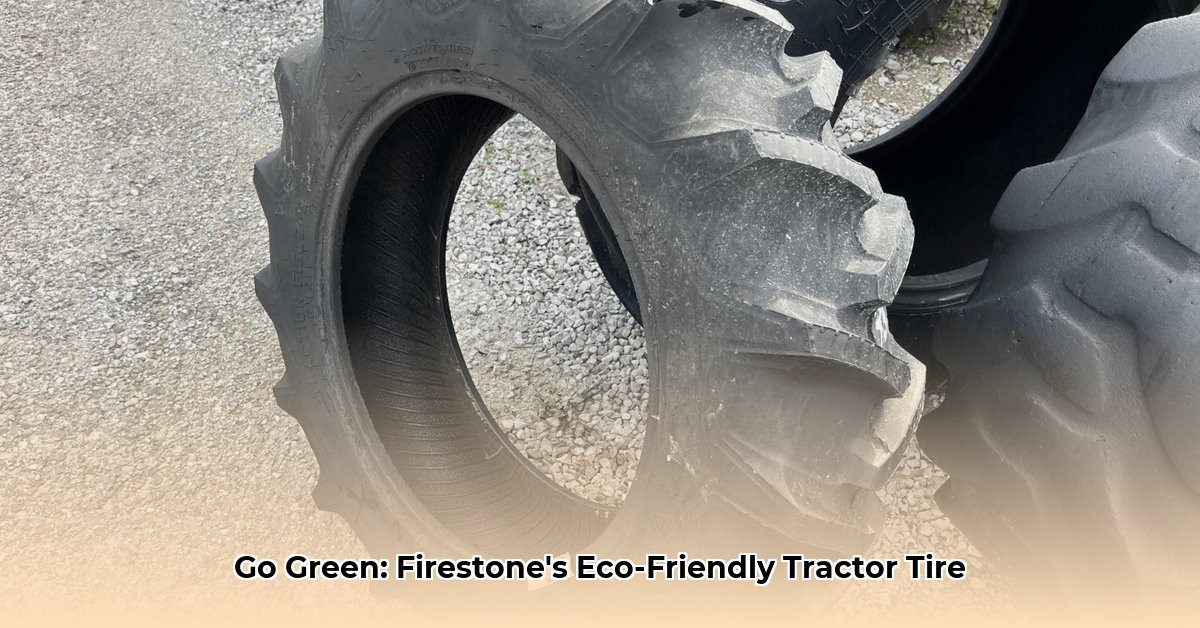
Assessing the Environmental Claims of the Firestone Super All-Traction II 11.2-24 Tire
The Firestone Super All-Traction II (SAT II) 11.2-24 tractor tire is marketed as a sustainable solution for modern agriculture, promising reduced soil compaction and improved fuel efficiency. For more on tire technology, see this page on water-filled options. This review analyzes the available evidence supporting these claims, highlighting the need for further research and outlining actionable steps for farmers, manufacturers, and researchers. The assessment focuses on the tire's potential environmental impact within the broader context of sustainable agricultural practices.
Traction, Soil Compaction, and Fuel Efficiency: A Critical Examination
Firestone promotes the SAT II's design, which features an increased footprint and enhanced tread pattern, as contributing to reduced soil compaction and improved fuel efficiency. Lower soil compaction, theoretically, should lead to healthier plant growth and potentially higher yields. Reduced compaction might also minimize the energy required for field operations, resulting in fuel savings. However, these claims currently lack robust, independent verification. To date, no peer-reviewed studies provide quantitative data comparing the SAT II's performance in soil compaction and fuel efficiency against other comparable tires under controlled conditions. The absence of this crucial data prevents a definitive assessment of the tire's true environmental benefits.
Expanding the Sustainability Perspective: Beyond Immediate Performance Metrics
A comprehensive sustainability assessment necessitates a holistic view, going beyond immediate soil compaction and fuel economy metrics. Several key aspects require further investigation:
Material Sourcing and Production: The environmental impact of the tire's manufacturing process, including the sourcing of raw materials (e.g., rubber, steel) and energy consumption during production, needs transparent disclosure. Information regarding the carbon footprint associated with the tire's production is currently unavailable. A Life Cycle Assessment (LCA) would be essential in quantifying this impact.
Tire Lifespan and Durability: A longer lifespan reduces the frequency of tire replacements, lessening the overall environmental burden. While Firestone claims superior durability for the SAT II, independent verification through long-term field trials and comparisons with competitive products is necessary to support this claim.
End-of-Life Management: Sustainable tire disposal and recycling practices are crucial. Details regarding the tire's recyclability and the availability of responsible end-of-life management programs are lacking and require clarification from the manufacturer.
Actionable Intelligence: Recommendations for Stakeholders
To facilitate a better understanding of the SAT II's true environmental performance, several actionable steps are needed:
Independent Field Trials: Farmers should conduct rigorous field tests comparing the SAT II's performance (fuel consumption, soil compaction, yield) against other tires used under identical conditions. Meticulous record-keeping is crucial for generating credible data.
Transparent Data Sharing by Firestone: Firestone should publish a comprehensive and independently verified LCA, detailing the environmental impact across the tire's entire lifecycle, from material sourcing to disposal. This would enhance transparency and build trust.
Collaborative Research: Agricultural scientists and researchers should design and implement controlled experiments to quantify the SAT II's impact on soil compaction and fuel efficiency compared to other tires widely used in the agricultural sector. Results should be published in peer-reviewed journals.
Government Support for Sustainable Practices: Government agencies can incentivize the adoption of sustainable agricultural technologies, including sustainable tires, through financial incentives and research funding. They should also develop and enforce regulations for responsible tire disposal and recycling.
Conclusion: The Need for Evidence-Based Assessment
While the Firestone 11.2-24 SAT II tire holds promise as a sustainable agricultural solution, a definitive conclusion on its eco-friendliness remains elusive due to the current lack of sufficient data. The potential benefits—reduced soil compaction and improved fuel efficiency—are plausible, but require rigorous independent verification through field trials and dedicated research. A transparent approach, involving all stakeholders, is essential to ensure evidence-based decision-making in the pursuit of sustainable agricultural practices.
Key Takeaways:
- The environmental claims surrounding the Firestone 11.2-24 SAT II tire need independent verification through rigorous field trials and controlled experiments.
- A comprehensive Life Cycle Assessment (LCA) is crucial to fully understand the tire's environmental impact across its entire lifecycle.
- Collaboration between farmers, manufacturers, researchers, and government agencies is essential for promoting and assessing the sustainability of agricultural technologies.